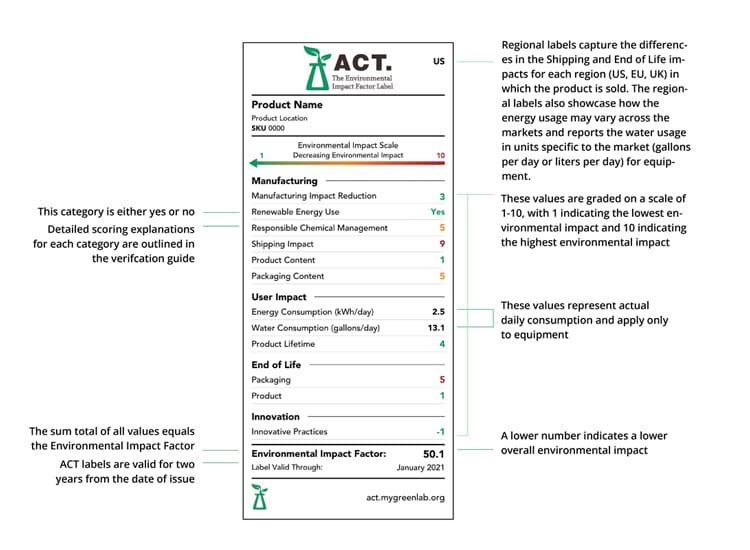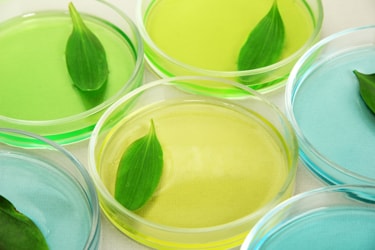Four Actionable Ways to Prioritize Sustainability in Your Lab
It’s no surprise that laboratories are incredibly resource heavy – they create a lot of waste, consume a lot of energy, and require a lot of water. It’s estimated that the plastic waste created in labs every year could cover an area 23 times the size of Manhattan, ankle-deep. Furthermore, after data centers, laboratories are known to consume more energy per square foot than any other sector.
Although labs are some of the most resource-intensive spaces, they don’t need to be. The adoption of greener practices within the scientific industry is evolving rapidly. A recent study released by My Green Lab found that more companies than ever are making bold, ambitious commitments to sustainability within their labs. As outlined in the study, as of late 2022 some 46% of the biotech and pharmaceutical industries had committed to the UN’s Race to Zero, a global campaign that rallies organizations to take radical and immediate action to achieve net zero carbon emissions by 2050 at the latest. Nearly 1,500 labs worldwide have engaged in My Green Lab Certification, the global standard for laboratory sustainability best practice and a key measure of progress in the industry.
The positive shift in committing to sustainable practices is possible due to the proliferation of essential and accessible programs and resources. Now, more than ever, organizations can prioritize sustainability with the help of resources that offer everything from how to procure eco-friendly lab supplies to actionable best practice and education on green lab concepts and practices.
Below, we have outlined four actionable ways to prioritize sustainability, procure sustainable supplies from companies you trust, and continue contributing to a global culture of sustainability in science.
1. Procure Sustainable Instruments and Products with the ACT Label
Procuring products that are eco-friendly is a key step in prioritizing sustainability. By purchasing instruments and products that reduce waste, energy consumption, and solvent/consumable use, organizations can get closer to achieving carbon neutrality and zero-waste goals.
When making purchasing decisions, you may be met with opposition from senior management due to cost. To effectively advocate for more sustainable equipment and supplies within your lab, there are a few things to keep in mind. First, come armed with the facts: While sustainable products may cost more upfront, they often consume less energy throughout their lifetime, require less maintenance, and last longer. Furthermore, within the past 5 years, the margin in price between traditional lab products and eco-friendly products has narrowed, with costs becoming comparable.
However, there are still many instances in which sustainable products cost more. Here, we advise doing your research on where and how certain products were created. Why is one product cheaper than another? Often, it’s because they are created in countries without fair labor laws or environmental regulations, which can lower costs. When advocating for a certain product, understanding the supply chain can help justify higher costs and help you and your organization practice good and fair science.
In order to allow purchasers to make informed decisions about the products they buy and the manufacturers they work with, clear, comparable information on a product's efficiency and endurance is vital. The ACT Label program provides scientists and purchasers with a fully searchable product database with over 1,000 products (across 19 manufacturers), allowing you to compare products before purchasing or evaluate the impact of a product your lab is already using.
The ACT Label emphasizes Accountability, Consistency, and Transparency (ACT) around manufacturing, energy and water use, packaging, and end-of-life. The database makes it easy to choose more sustainable products by providing third-party verified information on a product’s environmental impact. Think of it as an eco-nutrition label for lab products.

2. Implement Sustainable Practices in Your Lab to Reduce Environmental Impact
Zero carbon ambitions are rapidly being adopted in the sustainability goals of the world’s most influential scientific corporations and institutions, and rightfully so – did you know that labs use 10× more energy and 4× more water than office spaces, and produce over 5.5 million metric tons (12 billion pounds) of plastic waste each year? Fortunately, sustainable actions can help drive these numbers down and there are a variety of sustainability tips and tricks that can be immediately implemented within laboratory operations, including those listed below.
- Shut the Sash: A single chemical fume hood can use as much energy as 3.5 households each day. Remember to shut the sash! By shutting fume hood sashes when work is complete, you can save up to 40% of energy
- Install Low-Flow Aerators on Taps to Reduce Water Flow: Low-flow aerators can reduce tap flow from 15 L/min to <5.7 L/min . This is an easy and cheap option that will significantly reduce water usage
- Turn Off Equipment When Not in Use: Plug load makes up about 20% of energy consumption in a lab. It may sound simple, but turning off equipment, computers, and lights when not in use can have a big impact
- Adjust Refrigeration Temperatures: Second only to fume hoods, cold storage is the next biggest category of energy consumer in your lab. ‘Chilling up’ your ultra-low temperature (ULT) freezer from −80°C to −70°C can reduce energy consumption by 30–40%. Learn more about this change here
To better understand how to create meaningful change within your lab, check out My Green Lab Certification. This program helps organizations achieve their sustainability goals by educating lab personnel on green lab best practices for reducing energy, water, and chemicals/materials use (plus waste production), as well as how to engage and activate employee participation. Certifying a laboratory arms scientists and teams that support laboratories with best practices and a proven process for change.
Tried and true methods rooted in science can dramatically reduce the environmental impact of your lab. With ~1,600 labs and 18,000 scientists from over 220 institutions and 40 countries engaging in certification, the program’s global reach demonstrates the industry’s desire to continue transforming.
3. Educate and Advocate
Some of the most powerful tools in prioritizing sustainability are to educate yourself on the impact of your actions, to discover how to make meaningful change, and to continually advocate for sustainability within your community. Expanding your knowledge of sustainable best practices and programs and using your voice to build a culture of sustainability will help us collectively to achieve a healthier, fairer zero-carbon world. There are a variety of options to get started, including:
- The My Green Lab Ambassador Program: This free, online resource is designed for scientists and laboratory professionals who are motivated to encourage their labs to be more sustainable. It will provide you with a quick introduction to lab sustainability and ideas for how sustainable actions can be implemented at your organization. As an ambassador, you’ll have access to the entire ambassador network of over 3,600 sustainability advocates from 59 countries.
- The Green Lab Accredited Professional Course: This first credential of its kind has been developed to offer scientists and the people who work in laboratories the opportunity to grow their knowledge and demonstrate their expertise in lab sustainability. Through expert content and an interactive format, the AP course offers modules to expand your knowledge on waste, green chemistry, procurement, and more.
4. Take a Leadership Role
There is an inextricable link between a healthy planet and healthy people. Your distributor of scientific products should support the urgent calls for action from scientists around the world to address climate change. This approach to the environment should align with their mission to enable scientists to make the world healthier, cleaner, and safer. While working to reduce impact on the planet, your suppliers should also actively support your sustainability ambitions by focusing on:
- Product Design: By incorporating sustainability principles into the design of greener product alternatives, your suppliers can help you advance sustainability in the lab by minimizing the use of hazardous chemicals, decreasing waste and material consumption, and increasing energy efficiency.
- Product Choice: Transparency is a key principle. The Fisher Scientific Greener Choice program enables you to find lab products with a lower environmental impact, offering more than 6,000 products from various brands. These products must meet strict criteria and offer environmental attributes itemized in the US Federal Trade Commission’s Green Guides. Eligible products are labeled with a green leaf symbol on the Fisher Scientific website, with all claims substantiated by the manufacturer.
- Product Labeling: Your distributor of scientific products should engage with externally validated labeling systems, such as the ACT environmental impact factor label mentioned above. Emphasizing accountability, consistency, and transparency, the ACT label is designed to address the needs of scientists and procurement specialists for clear, verified information about the environmental impact of laboratory products. At the end of 2021, Thermo Fisher offered 470 products with an ACT label, and this number has continued expanding to enable research, pharmaceutical, and clinical laboratories to advance their sustainability objectives.
- Packaging & Transport: Packaging design is integral to minimizing environmental impact. The goal is to design packaging and transport solutions that preserve product integrity while maximizing freight density and therefore use less fuel. Whether redesigning the packaging of individual components within kits, reducing the use of dry ice and other cold shipping methods, or transitioning to readily recyclable shipping materials, your distributor of scientific products must be actively reducing their environmental impact and helping you to meet your climate and waste reduction goals.
- Innovation: As part of a broader portfolio of offerings that have been designed, or redesigned, for sustainability, your distributor of scientific products should strive to develop products in a way that minimizes the use of natural resources and impact on the environment. Products are now increasingly available with greater energy efficiency, more sustainable disposal options, and less hazardous components, as well as with reduced waste production in the manufacturing, packaging, and usage stages of their life cycle.
References
For more information please visit www.eu.fishersci.com/go/green-solutions

